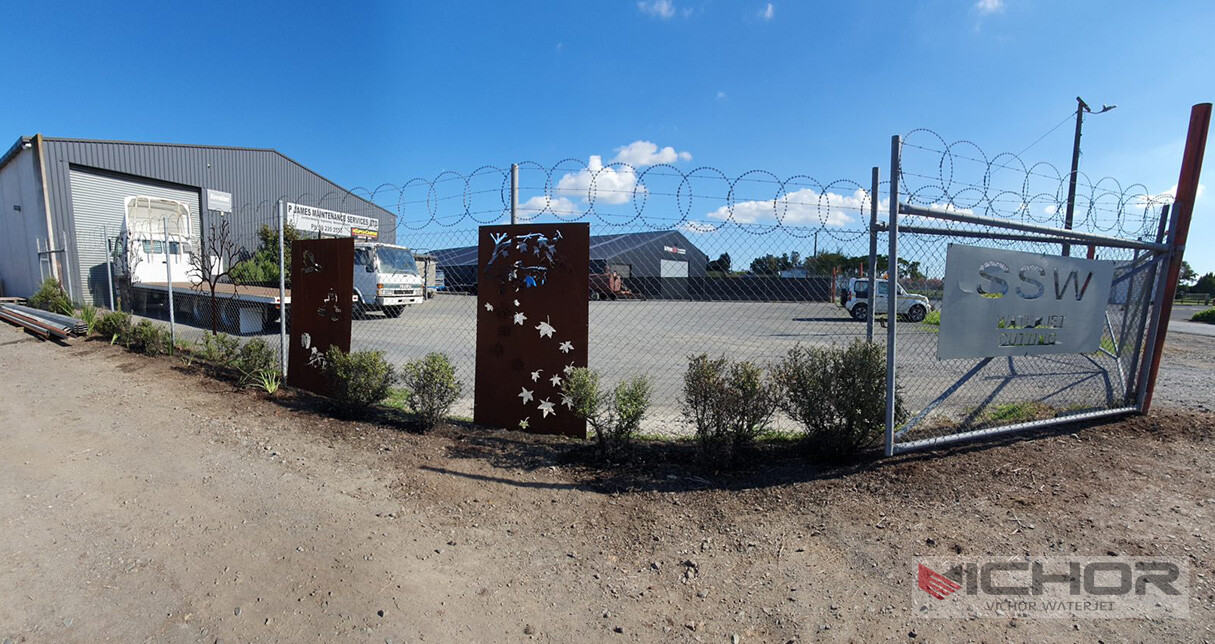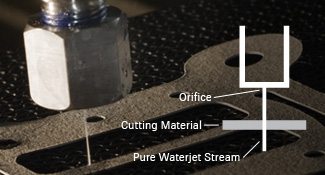
Pure Water Jet Cutting: Transforming Material Processing with Precision and Efficiency
In the ever-evolving landscape of industrial manufacturing, pure water jet cutting stands out as a revolutionary technology that combines precision, versatility, and environmental friendliness. This method utilizes high-pressure water streams to slice through a wide array of materials without the need for heat or abrasive additives. As industries seek more sustainable and accurate cutting solutions, pure water jet cutting has gained prominence for its ability to handle delicate tasks while minimizing material waste. In this article, we will explore the core aspects of pure water jet cutting, from its fundamental principles to its practical applications, providing a thorough understanding of why this technology is reshaping modern manufacturing processes. By the end, you’ll have a clear picture of how pure water jet cutting can benefit various sectors and address common challenges in material processing.
What is Pure Water Jet Cutting?
Pure water jet cutting is a non-thermal cutting process that employs a focused stream of water at extremely high pressures to cut through materials. Unlike abrasive water jet cutting, which mixes garnet or other abrasives with water, pure water jet cutting relies solely on water, making it ideal for softer materials where contamination or heat damage is a concern. The process typically involves pressurizing water to levels exceeding 60,000 psi (pounds per square inch) and directing it through a small nozzle to create a fine, high-velocity jet. This jet can cleanly cut through substances like foam, rubber, plastics, and food products without generating heat-affected zones, which are common in laser or plasma cutting. The origins of pure water jet cutting date back to the 1970s, when it was initially developed for mining and aerospace applications, but it has since expanded into numerous industries due to its precision and adaptability. Essentially, pure water jet cutting offers a cold-cutting solution that preserves material integrity, reduces environmental impact, and enhances operational efficiency. As we delve deeper, you’ll see how this method distinguishes itself from other technologies and why it’s becoming a go-to choice for many manufacturers.
How Pure Water Jet Cutting Works
The mechanics of pure water jet cutting are both simple and sophisticated, involving several key components that work in harmony to achieve precise cuts. At the heart of the system is a high-pressure pump, which intensifies water pressure from a standard supply to ultra-high levels, often ranging from 30,000 to 90,000 psi. This pressurized water is then channeled through reinforced tubing to a cutting head, where it passes through a small orifice—typically made of sapphire or diamond—to form a coherent, high-speed jet. The nozzle size is critical, as it determines the jet’s diameter and cutting accuracy, often as fine as 0.003 inches.
Once the water jet exits the nozzle, it travels at speeds approaching three times the speed of sound, enabling it to penetrate materials with minimal force. The cutting process is controlled by a computerized numerical control (CNC) system, which guides the cutting head along predefined paths based on digital designs. This automation ensures repeatability and complex pattern execution, making pure water jet cutting suitable for intricate shapes and high-volume production. Since no heat is involved, the risk of material distortion, melting, or hardening is eliminated, which is particularly advantageous for heat-sensitive materials. Additionally, the absence of abrasives means that pure water jet cutting produces a clean edge without embedded particles, reducing post-processing needs. Overall, this technology leverages the natural properties of water to deliver a efficient, precise, and versatile cutting solution that adapts to various material thicknesses and types.
Advantages of Pure Water Jet Cutting
Pure water jet cutting offers a multitude of benefits that make it a preferred choice in many industrial settings. First and foremost, it is an environmentally friendly option, as it uses only water—a renewable resource—and produces no hazardous fumes, dust, or toxic byproducts. This aligns with growing sustainability goals and workplace safety regulations. Another significant advantage is its versatility; pure water jet cutting can handle a broad spectrum of materials, including composites, soft metals, textiles, and food items, without the need for tool changes. This flexibility reduces setup times and increases productivity.
Precision is a hallmark of pure water jet cutting, as it allows for tight tolerances and intricate detailing without compromising material properties. The cold-cutting nature prevents thermal stress, preserving the structural integrity of materials like plastics or foams that might warp under heat. Moreover, pure water jet cutting minimizes kerf width—the material removed during cutting—which leads to less waste and higher material utilization rates. This efficiency translates to cost savings over time, especially in industries where material costs are high.
From an operational perspective, pure water jet cutting systems are relatively easy to maintain compared to thermal cutting methods, as they have fewer consumable parts and no risk of nozzle clogging from abrasives. The process also supports omnidirectional cutting, meaning it can cut in any direction without reorientation, further enhancing its efficiency. By embracing pure water jet cutting, businesses can achieve faster turnaround times, improved product quality, and a smaller environmental footprint, making it a smart investment for forward-thinking manufacturers.
Applications of Pure Water Jet Cutting
The applications of pure water jet cutting span a diverse range of industries, thanks to its adaptability and precision. In the automotive sector, it is used for cutting interior components like dashboards, gaskets, and insulation materials, where clean edges and no heat damage are crucial. The aerospace industry relies on pure water jet cutting for shaping composite materials in aircraft interiors and components, ensuring lightweight and durable parts without delamination.
In the food processing industry, pure water jet cutting has revolutionized how products are handled, enabling precise slicing of items like cakes, meats, and vegetables without contamination or crushing. This hygienic approach maintains food quality and safety standards. Similarly, in textiles and apparel, pure water jet cutting allows for accurate patterning of fabrics, leather, and synthetic materials, reducing fraying and waste.
The electronics industry benefits from pure water jet cutting for trimming circuit boards and insulating materials, where thermal sensitivity is a concern. Additionally, in medical device manufacturing, it is employed to cut biocompatible materials and precision components for implants and instruments. Even in artistic and architectural fields, pure water jet cutting is used to create intricate designs in materials like stone, glass, and tiles, offering limitless creative possibilities. This wide applicability underscores how pure water jet cutting serves as a cross-industry solution, driving innovation and efficiency in various domains.
Comparing Pure Water Jet Cutting to Other Cutting Methods
When evaluating cutting technologies, pure water jet cutting often stands out in comparisons due to its unique characteristics. Unlike laser cutting, which uses heat and can cause thermal damage to materials, pure water jet cutting is a cold process that avoids such issues, making it superior for heat-sensitive applications. Laser cutting may be faster for thin metals, but pure water jet cutting excels in handling thicker, non-metallic materials without compromising quality.
Compared to plasma cutting, which is primarily suited for conductive metals and generates significant heat and slag, pure water jet cutting offers a cleaner, more versatile approach that works on both conductive and non-conductive materials. Plasma cutting tends to have higher operational costs due to gas consumption and nozzle wear, whereas pure water jet cutting relies on water, which is more economical and environmentally benign.
In contrast to mechanical cutting methods like sawing or milling, pure water jet cutting produces no mechanical stress or tool wear, leading to longer equipment life and reduced maintenance. It also allows for greater design flexibility, as it can easily cut complex shapes without the need for multiple tools. However, pure water jet cutting may have slower cutting speeds for very hard materials compared to abrasive water jet cutting, which incorporates abrasives for enhanced cutting power. Overall, pure water jet cutting strikes a balance between precision, versatility, and cost-effectiveness, making it a compelling alternative in many scenarios where other methods fall short.
Maintenance and Safety Considerations for Pure Water Jet Cutting
Proper maintenance and safety protocols are essential for maximizing the benefits of pure water jet cutting systems. Regular maintenance involves inspecting and replacing components like high-pressure seals, nozzles, and filters to ensure optimal performance. The water used in pure water jet cutting should be purified to prevent impurities from clogging the system, which can reduce cutting efficiency and increase downtime. Typically, filtration systems are integrated to remove particles, and periodic flushing helps maintain water quality.
From a safety perspective, operating a pure water jet cutting system requires adherence to strict guidelines due to the high pressures involved. Operators must wear protective gear, such as safety glasses and gloves, to shield against potential high-velocity water streams or debris. The work area should be enclosed to prevent accidental exposure, and emergency stop mechanisms must be readily accessible. Training is crucial to handle the CNC controls and understand the system’s limitations, such as avoiding direct contact with the jet, which can cause serious injury.
Additionally, pure water jet cutting poses minimal environmental risks compared to other methods, but water disposal should be managed according to local regulations, especially if cutting materials that could contaminate the water. By implementing robust maintenance schedules and safety measures, users can extend the lifespan of their pure water jet cutting equipment and ensure a safe working environment, ultimately enhancing productivity and reliability.
Future Trends in Pure Water Jet Cutting
The future of pure water jet cutting looks promising, with ongoing advancements aimed at increasing efficiency, precision, and accessibility. One key trend is the integration of artificial intelligence and machine learning into CNC systems, enabling real-time adjustments for improved cut quality and reduced waste. This smart automation could make pure water jet cutting more adaptive to varying material properties and production demands.
Another development is the enhancement of pump technologies to achieve even higher pressures while reducing energy consumption, making pure water jet cutting more sustainable and cost-effective. Researchers are also exploring hybrid systems that combine pure water jet cutting with other technologies, such as UV curing or additive manufacturing, to expand its applications in fields like 3D printing and composite fabrication.
As industries continue to prioritize green manufacturing, pure water jet cutting is likely to see increased adoption due to its eco-friendly profile. Efforts to recycle and treat water used in the process are expected to minimize environmental impact further. Moreover, the rise of Industry 4.0 and the Internet of Things (IoT) may lead to interconnected pure water jet cutting systems that offer predictive maintenance and remote monitoring, boosting overall operational efficiency. These innovations position pure water jet cutting as a cornerstone of next-generation manufacturing, driving progress across multiple sectors.
Frequently Asked Questions About Pure Water Jet Cutting
Q1: What is the main difference between pure water jet cutting and abrasive water jet cutting?
A1: The primary difference lies in the cutting medium: pure water jet cutting uses only high-pressure water, making it suitable for softer materials like foam, rubber, and food, as it avoids contamination. In contrast, abrasive water jet cutting mixes abrasives such as garnet with the water stream, enabling it to cut harder materials like metals and ceramics. Pure water jet cutting is ideal for applications where heat and particle embedding are concerns, while abrasive water jet cutting offers greater cutting power for dense substances.
Q2: What types of materials can be cut using pure water jet cutting?
A2: Pure water jet cutting is highly versatile and can cut a wide range of materials, including plastics, composites, foam, rubber, textiles, paper products, and food items. It is particularly effective for soft, heat-sensitive, or layered materials that might be damaged by thermal cutting methods. However, it is less effective on very hard materials like thick metals or stone without abrasives.
Q3: Is pure water jet cutting an environmentally friendly option?
A3: Yes, pure water jet cutting is considered environmentally friendly because it uses water as the sole cutting agent, which is non-toxic and recyclable. It produces no harmful emissions, dust, or hazardous waste, and the water can often be treated and reused. This makes it a sustainable choice compared to methods that involve chemicals, gases, or generate heat-related pollutants.
Q4: How does pure water jet cutting handle precision and complex designs?
A4: Pure water jet cutting achieves high precision through computerized numerical control (CNC) systems that guide the cutting head along exact paths based on digital designs. The fine water jet allows for intricate cuts with tight tolerances, often as small as 0.005 inches, and it can execute complex shapes, curves, and patterns without tool changes. This makes it ideal for detailed work in industries like aerospace, automotive, and art.
Q5: What are the typical costs associated with pure water jet cutting?
A5: The costs of pure water jet cutting include initial equipment investment, which can vary based on system size and capabilities, as well as ongoing expenses for maintenance, water purification, and energy consumption. However, it often proves cost-effective in the long run due to reduced material waste, lower consumable costs (since no abrasives are used), and minimal post-processing needs. Operational costs are generally lower than thermal cutting methods for suitable applications, but they can be higher than simple mechanical cutting for high-volume, simple shapes.
In conclusion, pure water jet cutting is a transformative technology that offers precision, versatility, and sustainability for modern manufacturing. By understanding its principles, benefits, and applications, industries can leverage this method to enhance efficiency and innovation. If you have more questions, consult with experts to see how pure water jet cutting can fit into your operations.
continue reading
Related Posts
- 1155 words5.8 min read


